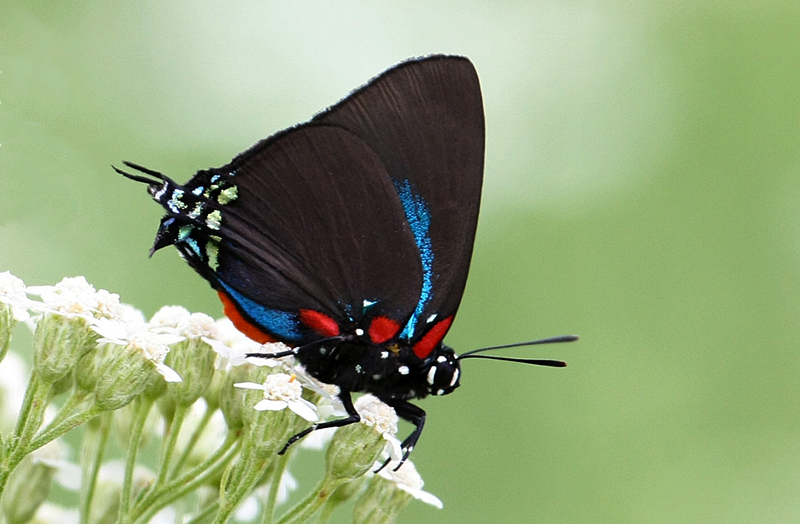
Recognizing individual butterflies visiting your garden is like recognizing a friend from a distance. From afar, their shape, size and silhouette look familiar, and their unique gait or swing of the arms might be distinctive. (For a winged creature, that would be their flight pattern.) As they draw nearer, you see the color of their hair (or wings), the shape of their glasses (or antennae), and their clothing (or color and markings). Soon you put all the pieces together and know who you’re looking at.
Use your observations of butterflies in your garden to narrow your guesses to families and subfamilies, and you’ll more easily identify your pollinator friends. Here are some characteristics that certain types of butterflies possess and provide clues to their classification.
1. Flight Patterns

Slow and buoyant describes the flight of butterflies called blues, so you might think of them dancing slowly to the blues. Hairstreaks, on the other hand, move like lightning, quick and erratic. Satyrs’ flight is called floppy. More poisonous butterflies are the ones that, when in caterpillar phase, have eaten toxic plants that will taste awful to a bird such as a monarch that ate milkweed. Milkweed butterflies tend to have a straighter flight path but can make sharp turns quickly to evade predators. Blues tend to fly low to the ground, while their cousins the azures flit around treetops.
2. Wing Shapes

The way a butterfly at rest holds its wings is another clue to the family. Crescents and checkerspots tend to sit with their wings spread out. Blues leave their wings closed or just partly open. Skippers’ wings rest slightly raised at a 45-degree angle. The zebra longwing (pictured above) is in the heliconia family which is recognizable by the wings being longer than they are wide. Swallowtails are easily recognizable with their long, thin extensions on the bottom of their wings. Hairstreaks are smaller and have tiny little tails. Just as the eyespot patterns on some winged insects deceive predators, butterfly tails can trick an attacker into aiming for false antennae. Skippers antennae end in a hook, and snout butterflies have a long mouthpart that reaches out between the antennae. Other body parts that are a little harder to see, the feet and forelegs are also used for classifying different butterflies.
3. Colors

Whites and sulphurs (a sulphur is pictured above) belong to the same family, and their names signify their colors. The lovely-named gossamer-winged family of butterflies include coppers and blues, which are among the smallest butterflies in the world. Hairstreaks often show a light-colored line running down their darker wings. Bright, bold, high contrast colors are typical of swallowtails and heliconians. Milkweed butterflies such as the monarch (pictured at the top of this article) and viceroy also use flashy color patterns as a visual warning to predators.
With these basic points in mind, open up a good butterfly field guide such as the Kaufman Field Guide to Butterflies of North America, or search the thousands of species by starting with butterfly families on the website Butterflies and Moths of North America. Then take it further: Learn to recognize your moths and caterpillars too.




